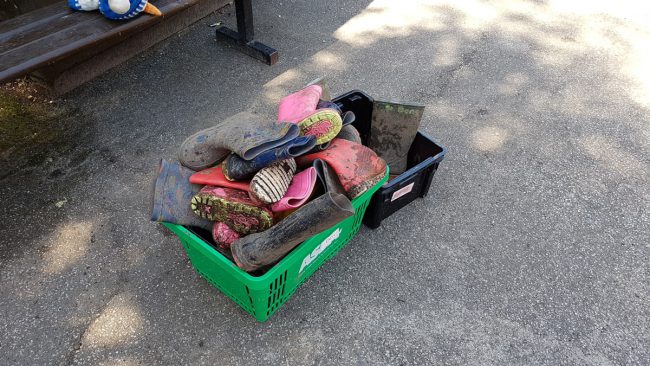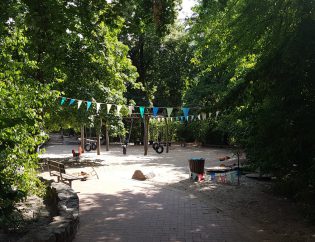
Growing greens to support children's social, emotional and mental health needs – learning from schools in the UK
June 2019
Visit of St Benedict’s Primary School Birmingham
St Benedict’s Primary School, a hundred years old brick house embedded in the dense urban neighbourhood of Birmingham’s east, welcomes children from multi-cultural backgrounds.
Colleagues from Learning through Landscapes (LtL) established the contact to the school team who worked closely with one of LtL’s network facilitators some years ago. After attending the LtL- Professional Accreditation Training in June 2019 I was fully motivated to get some inspirations from St Benedict’s School’s special achievements in greening the grounds.
Green and lush corners support pupils outdoor experience
A dedicated teacher and environmental educator introduced me to the unexpected green and lush corners of this relatively small and densely packed schoolground. Despite limited outdoor space, much attention is being paid to reserve sections of the schoolgrounds for greening, growing and playing activities.
Step by step small biotopes such as a butterfly- and bee garden and an eco- pond with aquatic plants, tadpoles and fish were established with the efforts of the pupils and the school community.
Various greening features give parts of the school ground the look and feel of a cosy garden: a trellis with climbers, a greenhouse full of vine and tomatoes, an apple tree with inviting seating elements for gatherings underneath as well as planting beds to grow crops and flowers.
School break in a garden
There is no greater fun than running into the garden after lesson! Here the kids can get their hands dirty, smell the Lavandula, hear frogs from the nearby pond, lay in the grass or hide and seek in the bushes. After school, they grow crops and harvest, work hand-in hand and simply experience the seasonal differences with all senses. During lesson, they observe, study flora and fauna and get indoor knowledge directly applied at their doorstep.
Teachers reported, the green schoolgrounds are for many of the children the only way to get connected to nature and spend time outdoors. This is one more reason for this dedicated school team to focus on regular school trips to nearby parks and forests or providing children with access to a range of outdoor learning opportunities as part of their curriculum. After school, the kids are invited to join the Gardening Club or support the Eco Committee and its sustainable school initiatives.
I was simply amazed by the opportunities the children were given and how much can be done with the right mission and dedication!
As initially said: where a will there’s a way! … This example of St Benedict’s Primary School Birmingham proofs: it is meaningful to green as much as possible areas of the schoolyard to get urban kids outdoors and to support their social, emotional and mental health needs!


